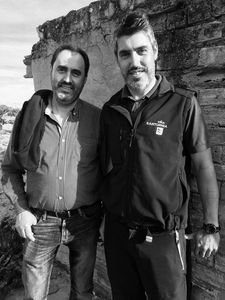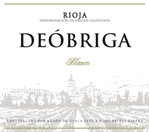 |
| Bodegas Ramon de Ayala is located in the tiny town (about 250 people) of Brinas, in Rioja Alta. Established in the northwest of Rioja between the mountain of Toloño (part of the mountain chain of Sierra de Cantabria) and the left margin of the Ebro river, Briñas is a privileged village for vine cultivation. It is 3 km from Haro (Rioja Alta) and another 3 km from Labastida (Rioja Alavesa). The domaine is a five generation family property that was created in 1853 by Tomas de Ayala. The winery now owns 30 hectares of vineyards in Rioja Alta (Briñas, Haro and Rodezno) and Alavesa (Labastida). Most of the vineyards (80%) are planted with Tempranillo. The rest is used to grow Viura, Mazuelo, Garnacha and Graciano. The oldest vineyard was planted in 1920, and most of the vineyards are 30 to 40 year old. In 1985, a new functional winery was created. It has 4700sf of underground facilities, equipped with stainless steel tanks and 500 liters barrels. The old bodega, which has a two story underground wine cave, is now used for aging homemade Cava. Today the Bodega is run by Gonzalo (the agronomist, in charge of the vineyards) and his uncle Ramon (the oenologist, in charge of the winemaking). Farming practices: organic. Will spray sulfur if needed. The name Deobriga (Divine Bridge) comes from Deo meaning God and Briga which means Bridge or Fortress. It is the name of a Roman town which, according to the historian Govantes (1846), was built on the route followed by Anthony Augustus from Astorga to Aquitaine; today, the town is known as Brinas. |
| Deobriga Website |
 |
| Rioja Blanco |
| 90% Viura, 10% Garnacha Blanca. The grapes come from estate vineyards located in Rioja Alta (Briñas and Haro, planted between 1996 and 2007) and Rioja Alavesa (Labastida, planted between1990 and 2000). They are grown on chalky clay soils, with gravel. The grapes are hand-picked the last week of September, destemmed, and placed in tanks, where they go through a 5 hour cold-maceration. They are then pressed and after racking, the juice is transferred to 225 liter oak barrels for the alcoholic fermentation (25 days at 14-16 ° C.). The wine remains for 4 months in contact with its fine lees, with continuous batônage. Marked minerality on the nose. Fresh and vivacious on the palate, white flowers with hints of vanilla. 12.6% ABV. 1,000 bottles produced. |
| Printer Friendly Version |
| Copyright © 2002-2017 VOS Selections, Inc. |